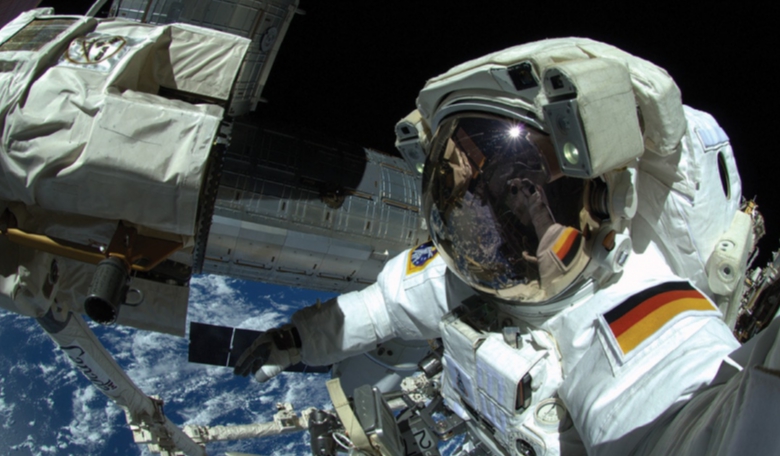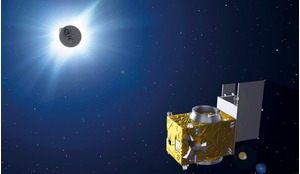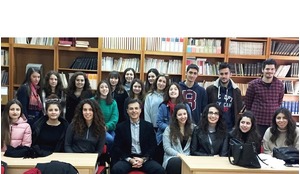In space research, the International Space Station (ISS) is a symbol of peaceful interational collaboration in Earth orbit, and is intended to be used intensively as a one-of-a-kind laboratory for cutting-edge research. In future, it will be necessary to maintain humankind’s capabilities for human spaceflight as well. If this is to be achieved, it will be necessary to conduct a comprehensive assessment of the operation of the ISS if a decision is to be made about a potential successor system.
The development of autonomous systems, particularly in the field of robotic exploration of the Solar System and the use of robots to support human missions, is a top priority for Germany.
At the same time, the Moon is a nearby location where we can gain knowledge about the evolution of the Solar System and is also a potential platform for space exploration.
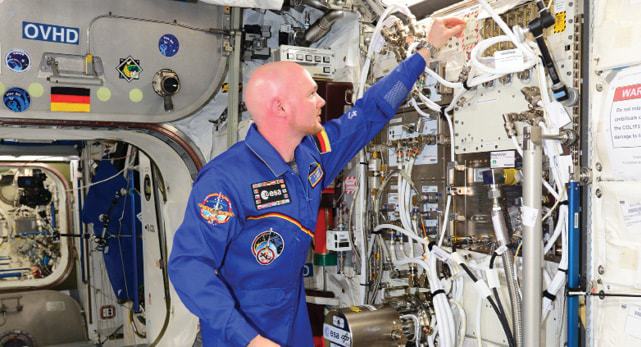 ESA German astronaut Alexander Gerst onboard the ISS.
ESA German astronaut Alexander Gerst onboard the ISS.
Implementation of national objectives in accordance with the German space strategy is carried out in large part in the context of ESA programmes. These are complemented by projects in the national space programme, which include providing instruments for ESA science programme missions, bi- and multi-lateral cooperation with international partners and preparatory technology developments.
Germany leads Europe as the largest contributor of funds to the relatively recent field of human spaceflight, which is still not 60 years old. This relates, in particular, to the development of infrastructure elements, which include the Columbus Laboratory, the Automated Transfer Vehicle (ATV) and the European Service Module for NASA’s Orion spacecraft.
More than 40 per cent of European ISS experiments come from German research institutions
The 24/7 operation of the Columbus module is supported by the Columbus Control Centre (ColCC) at the German Space Operations Center (GSOC) in Oberpfaffenhofen.
Germany is also among the leading nations in utilising the ISS and more than 40 per cent of European ISS experiments come from German research institutions. Over 1400 articles have been published in scientific journals since 2001 in the context of the DLR Space Administration programme ‘Research Under Space Conditions’, which supports national experiments.
With adequate international support, the Space Station can, for another decade, serve as a base for observing Earth and to gain experience for long-duration human spaceflight. Its advantages are that it is easily accessible and it offers the possibility for a rapid return to Earth.
Beyond the lifetime of the ISS, adequate post-ISS concepts need to be developed and used to build crewed space stations in low Earth orbit. Both the ISS and any possible successor space station are ideal for preparing human missions to the Moon or Mars, because they are, at present, our only opportunity for carrying out long-term missions. We need this base if we are to take further human steps within the Solar System, be they cis-lunar or Mars-related activities.
When it comes to activities beyond Earth orbit, the space research conducted at DLR has a separate programme, ‘Space Science’, which is devoted to fundamental research. The focus is on investigating the Solar System. Given the costs of interplanetary space missions, which can sometimes reach hundreds of millions of euros, the question of how to use funds in the most targeted way arises. How can DLR maximise the benefit from research and mission participation under these conditions?

DLR’s approach is to strive for strong international cooperation using opportunities to embark on joint exploration missions with other space agencies. This makes it possible to fly national payloads and become a sought after international partner at the same time. For financial reasons, the focus is on joint missions with ESA in the European arena and with international agencies such as NASA, JAXA and Roscosmos.
One of the most prominent cooperative projects is the NASA airborne observatory SOFIA. In this joint venture Germany supplied the telescope and now participates in the operation of the observatory. Another major cooperation is the Russian Spektrum Rontgen Gamma spacecraft, for which Germany is contributing the eROSITA instrument. In addition, Germany has provided instruments for nearly every NASA Mars mission.
An example of a very successful international project in which DLR participated is the European Rosetta mission to Comet 67P/Churyumov-Gerasimenko, in which development and operation of the Philae lander was led by DLR. Together with ESA, the first ever landing on a comet was performed on 12 November 2014.
 ESA’s unmanned Automated Transfer Vehicle-3 (ATV-3) approaching the ISS for docking in March 2012
ESA’s unmanned Automated Transfer Vehicle-3 (ATV-3) approaching the ISS for docking in March 2012
A similar project is being pursued with the development of the DLR MASCOT (Mobile Asteroid Surface Scout) lander. Developed together with the French space agency (CNES) and the Japanese Aerospace Exploration Agency (JAXA), this landing system is expected to descend from the Japanese Hayabusa 2 spacecraft onto the asteroid Ryugu (formerly 1999 JU3) in 2018 to support the search for a suitable place for the main spacecraft to acquire a sample that will be returned to Earth.
In addition to exploring asteroids, DLR is also participating in various missions to the outer and inner planets of the Solar System. The high-performance HRSC (High Resolution Stereo Camera) on board the Mars Express spacecraft has been delivering high-resolution images of the Martian surface since 2004. The now concluded Venus Express mission was similar, and investigated the atmosphere of Venus from 2006 onwards. The VIRTIS spectrometer on Venus Express was developed by DLR.
In addition to the already flown or still operational missions, various projects are currently underway. The InSight mission is being prepared with NASA, and DLR is contributing the HP3 (Heat Flow and Physical Properties Package) experiment as one of the two scientific payloads that will make it possible to conduct research in the field of planetary physics by measuring the heat flows on Mars.
The ESA/JAXA BepiColombo mission to Mercury is planned for launch in 2017; DLR is contributing the laser altimeter BELA as well as the infrared spectrometer MERTIS. Starting in 2022, the Jupiter Icy Moons Explorer (JUICE) will be launched to investigate the gas giant and its moons. DLR will contribute the laser altimeter GALA and key components of the camera system.
The ExoMars programme is of paramount importance for DLR in the field of robotic exploration. The two ExoMars missions, which ESA is carrying out together with the Russian space agency Roscosmos, have the goal of seeking traces of life on Mars. The first mission launched from Baikonur on 14 March 2016. It consists of the Trace Gas Orbiter, which will conduct detailed analyses of the Martian atmosphere, and the landing demonstrator Schiaparelli. The second mission is scheduled to launch in 2020 and it will land a rover on the surface of the Red Planet. Samples will be extracted from depths of up to two metres using a drill; the primary objective will be to search for organic molecules. German aerospace companies and German research institutions are participating in both missions.
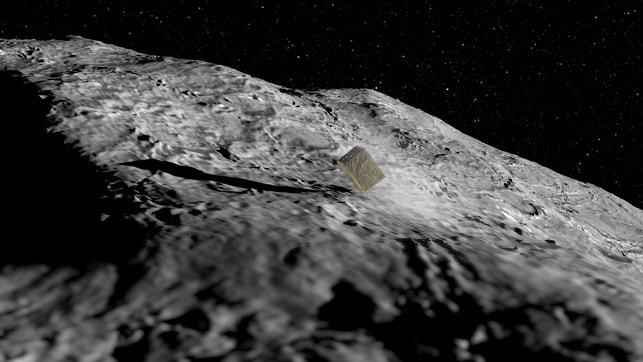 Engineers are working on the preliminary design of ESA’s Asteroid impact mission concept which includes a lander. If it comes to fruition touchdown would occur in late 2022. The asteroid lander, known as Mobile Asteroid Surface Scout-2 (Mascot-2) is under study by DLR. Mascot-1 is already in flight, carried on Japan’s Hayabusa-2 mission, launched on 3 December 2014 to land on its target asteroid during 2018.
Engineers are working on the preliminary design of ESA’s Asteroid impact mission concept which includes a lander. If it comes to fruition touchdown would occur in late 2022. The asteroid lander, known as Mobile Asteroid Surface Scout-2 (Mascot-2) is under study by DLR. Mascot-1 is already in flight, carried on Japan’s Hayabusa-2 mission, launched on 3 December 2014 to land on its target asteroid during 2018.
In addition to the systems and payloads developed for exploration within the Solar System, and dedicated to physical and geological exploration or planetary geodesy, DLR is also participating in a number of extrasolar research missions. As well as the CoRoT mission, carried out jointly with CNES, the ESA CHEOPS mission is scheduled for launch in 2017 and ESA’s PLATO mission is planned for launch from 2022 onwards, both with the goal of searching for exoplanets.
 The SOFIA airborne observatory operated by NASA and DLR is based at the Armstrong Flight Research Center in Palmdale, California.
The SOFIA airborne observatory operated by NASA and DLR is based at the Armstrong Flight Research Center in Palmdale, California.
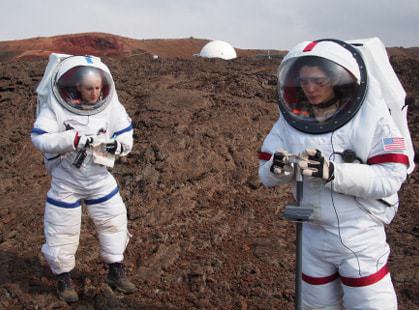 HI-SEAS (Hawaii Space Exploration Analog and Simulation) where scientists conduct simulated research to assist with the planning and development of future long duration space missions.
HI-SEAS (Hawaii Space Exploration Analog and Simulation) where scientists conduct simulated research to assist with the planning and development of future long duration space missions.
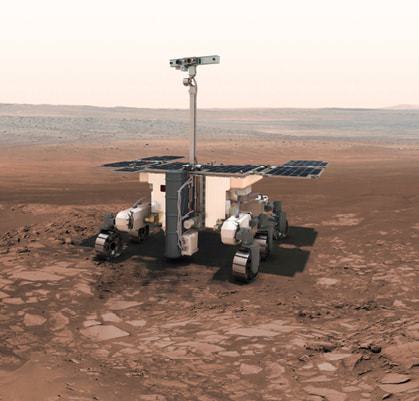 Artist’s impression of ESA’s ExoMars sixwheeled rover, the launch of which has now slipped from 2018 to 2020
Artist’s impression of ESA’s ExoMars sixwheeled rover, the launch of which has now slipped from 2018 to 2020
The Moon is also a destination for robotic exploration. Two products are to be contributed by ESA to the Russian Luna 27 mission, also known as Luna Resurs. This spacecraft will perform the first landing at the South Pole of the Moon, in the Aitken basin, to conduct regolith analyses. The European contributions are PILOT - a sensor package for precise landing navigation - and PROSPECT, consisting of a deep drill and a sample analysis payload.
In addition to its participation in various missions, DLR is also developing technologies for future exploration scenarios - the RegoLight project being one of several examples. DLR is investigating and developing technologies to sinter specifically shaped structures out of regolith using 3D printing with the aid of solar radiation. The regolith present on rocky planets could potentially be used for building structures on other planets. One example area of application would be the construction of habitats on the Moon or Mars.
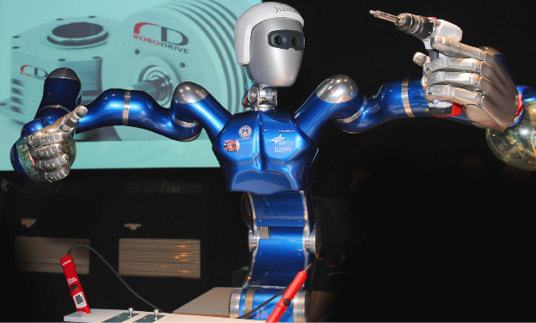
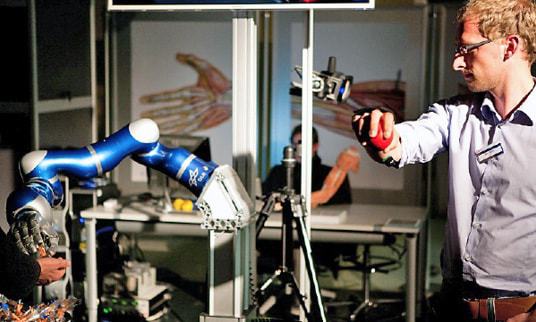 SpaceJustin, a humanoid upper body consisting of two Light-Weight Robot arms, two DLR-HIT Hands II, a torso and a head. serves as a development platform for human-centered telerobotics.
SpaceJustin, a humanoid upper body consisting of two Light-Weight Robot arms, two DLR-HIT Hands II, a torso and a head. serves as a development platform for human-centered telerobotics.
In line with the objective of the spaceflight strategy to determine Germany’s role in exploration, DLR is a member of the International Space Exploration Coordination Group (ISECG). This is the forum where 15 world space agencies exchange information about their plans for exploration. The Global Exploration Roadmap is among the products of this work. It provides a long-term policy framework for global activities relating to the exploration of the Solar System.
To maintain its competitiveness, Germany is preparing for missions based on the technological and scientific expertise developed over recent decades. By focusing on scientific payloads and systems such as landers, DLR is capable of reliably supporting exploration missions at the highest scientific level.





